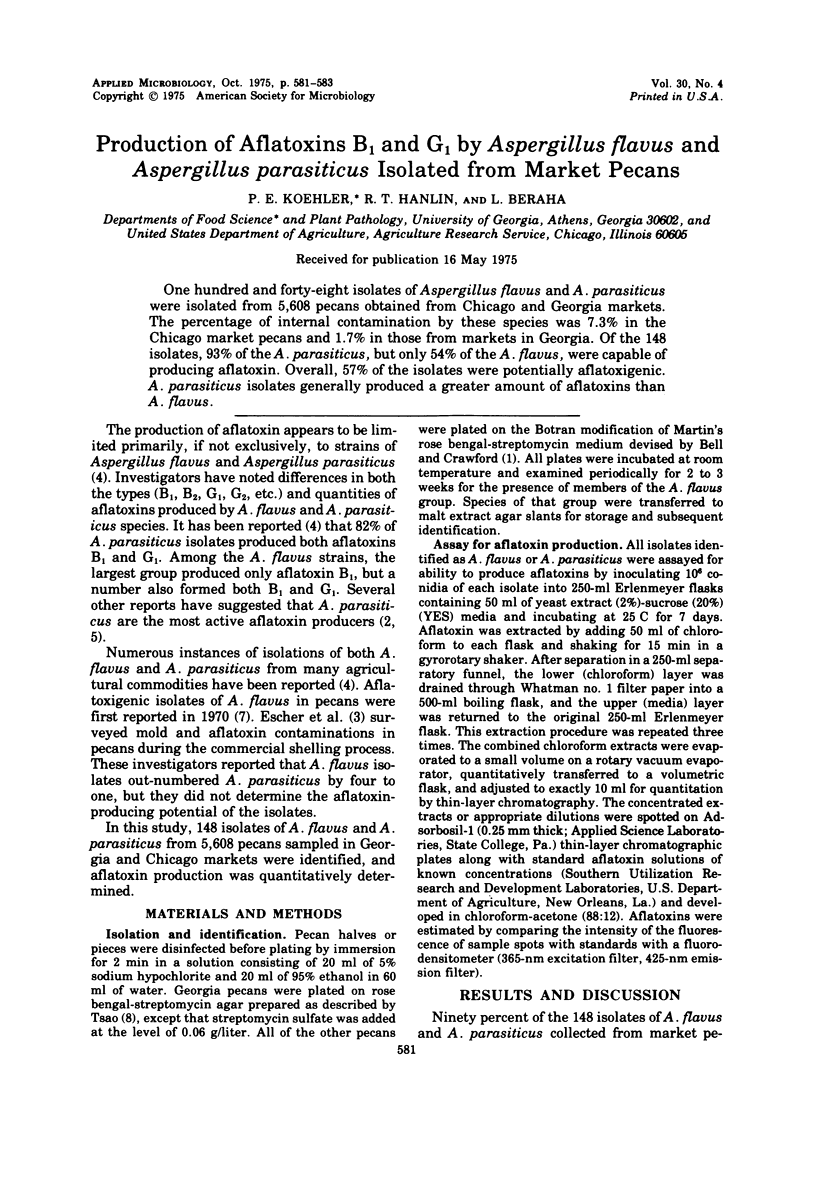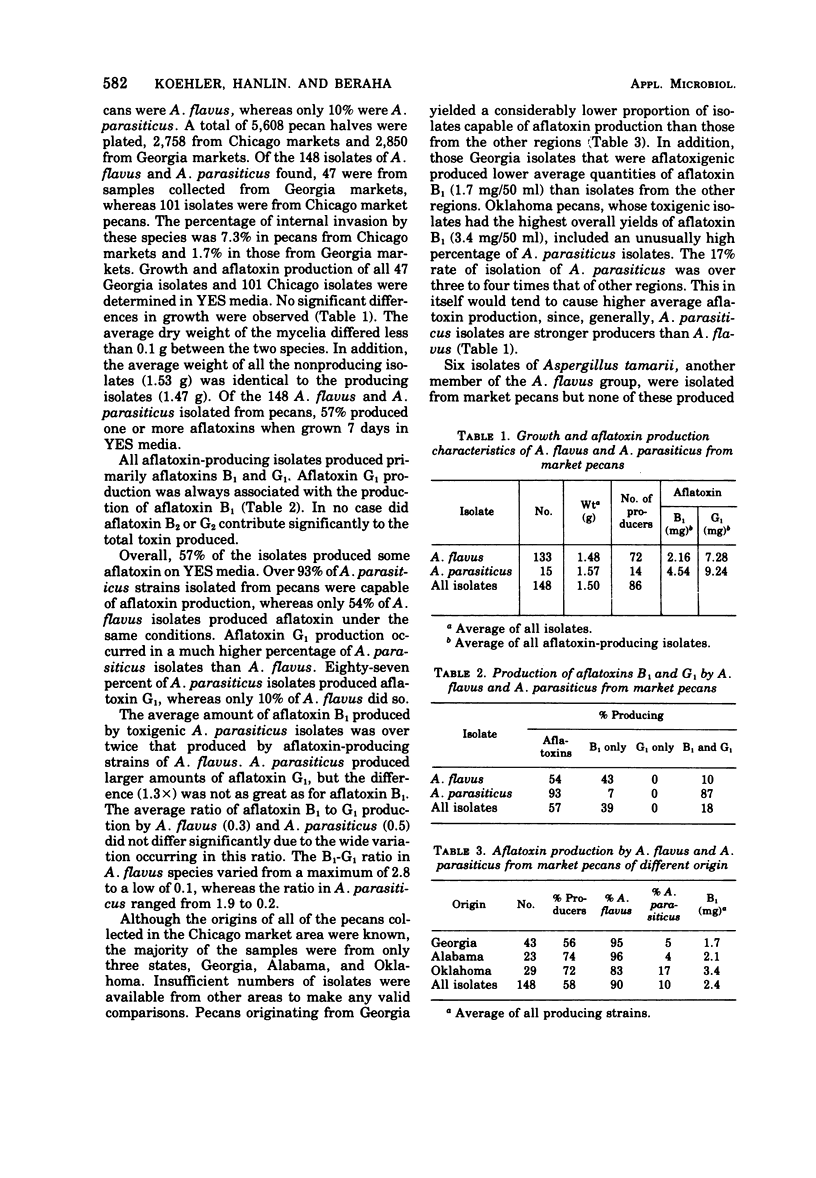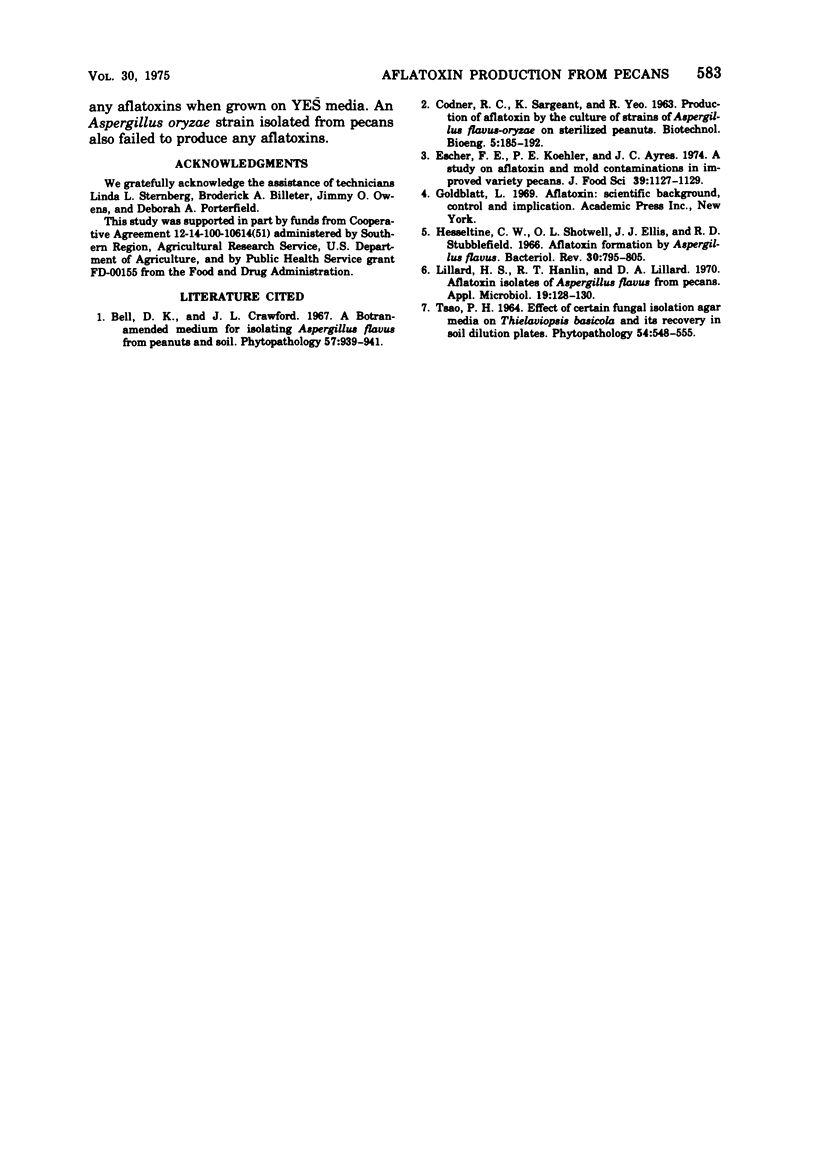Abstract
One hundred and forty-eight isolates of Aspergillus flavus and A. parasiticus were isolated from 5,608 pecans obtained from Chicago and Georgia markets. The percentage of internal contamination by these species was 7.3% in the Chicago market pecans and 1.7% in those from markets in Georgia. Of the 148 isolates, 93% of the A. parasiticus, but only 54% of the A. flavus, were capable of producing aflatoxin. Overall, 57% of the isolates were potentially aflatoxigenic. A. parasiticus isolates generally produced a greater amount of aflatoxins than A. flavus.
Full text
PDF


Selected References
These references are in PubMed. This may not be the complete list of references from this article.
- Bell D. K., Crawford J. L. A botran-amended medium for isolating Aspergillus flavus from peanuts and soil. Phytopathology. 1967 Sep;57(9):939–941. [PubMed] [Google Scholar]
- Hesseltine C. W., Shotwell O. L., Ellis J. J., Stubblefield R. D. Aflatoxin formation by Aspergillus flavus. Bacteriol Rev. 1966 Dec;30(4):795–805. doi: 10.1128/br.30.4.795-805.1966. [DOI] [PMC free article] [PubMed] [Google Scholar]
- Lillard H. S., Hanlin R. T., Lillard D. A. Aflatoxigenic isolates of Aspergillus flavus from pecans. Appl Microbiol. 1970 Jan;19(1):128–130. doi: 10.1128/am.19.1.128-130.1970. [DOI] [PMC free article] [PubMed] [Google Scholar]


